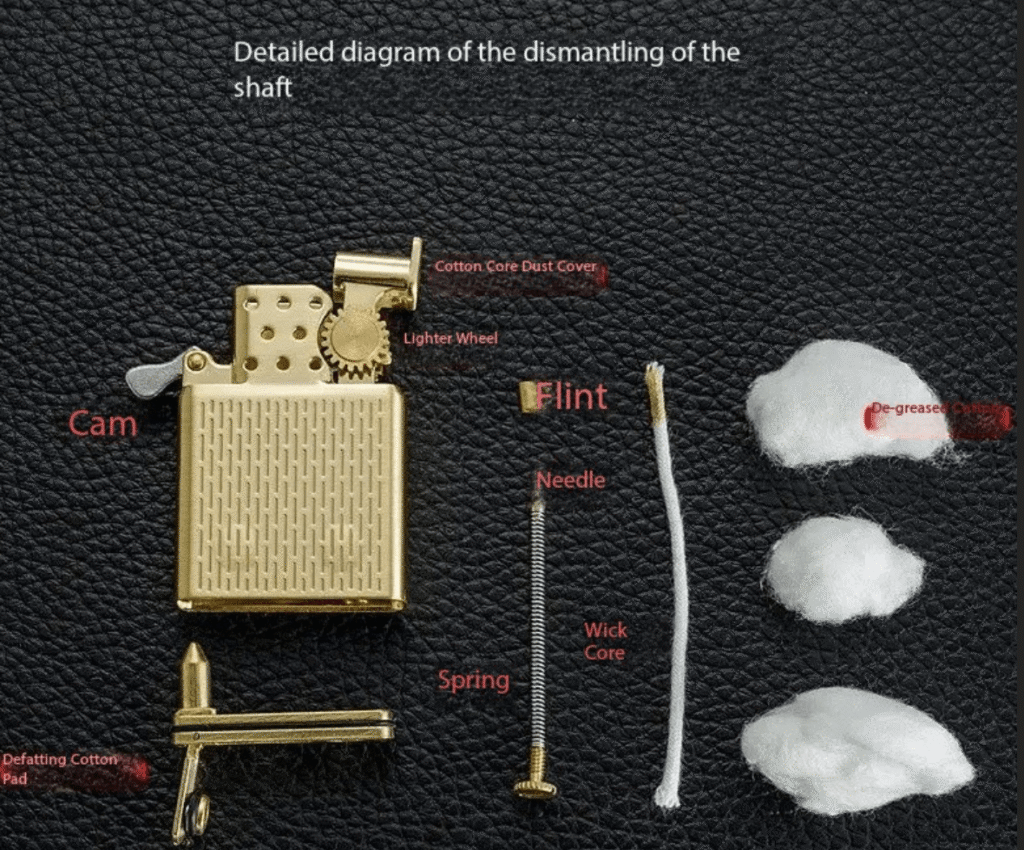
Intro
Understanding your lighter’s anatomy makes refilling, maintenance, and troubleshooting easy. Here’s a clear breakdown of the essential parts found on Zorro-style windproof kerosene (wick) lighters.
Outer case: Protects the insert and fuel chamber.
Lid & hinge: The lid flips open; the hinge and cam hold the lid open/closed with a secure “click,” helping control airflow and extinguishing when closed.
The removable metal inner unit that contains the combustion components (chimney, wick, flint system, and cotton packing).
A metal shroud with air holes around the flame. The perforations regulate airflow and help the flame resist wind by stabilizing combustion inside the chimney.
A braided, heat-resistant wick (often with wire support) that wicks liquid fuel from the packing to the flame. You trim or replace it periodically for best performance.
Flint wheel: Serrated steel wheel that sparks when spun.
Flint: The spark source, pressed upward by a spring & screw from the bottom of the insert. Replace flints as they wear.
Cotton packing: Fills the tank and holds fuel.
Felt pad (“Lift to Fill”): Lift to expose packing for refueling; helps manage saturation and spillage.
These inserts run on lighter fluid appropriate for wick lighters (kerosene-type or naphtha—check your model’s guidance).
Maintenance notes:
Trim or replace the wick when it chars/blackens.
Replace flints regularly.
Repack cotton if it degrades, and keep the felt pad in place to minimize evaporation.
Citations: Perforated chimney and windproof function; wick/packing/felt details; wick maintenance procedures; Zorro parts/consumables.